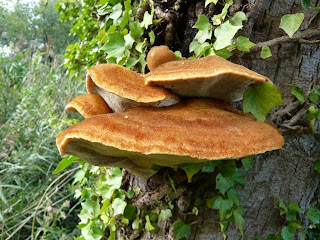Temperatures could range from +10 - -10, though there is unlikely to be any snow.
Here is my clothing;
 Craghopper shirt, Dockers wool shirt, two t-shirts, fleece, boxers and three grades of merino wool socks, thin set of merino wool thermals, a pair of craghopper trousers and my zoot suit.
Craghopper shirt, Dockers wool shirt, two t-shirts, fleece, boxers and three grades of merino wool socks, thin set of merino wool thermals, a pair of craghopper trousers and my zoot suit.other kit;
 Dry bags, bergan liners, possibles pouch, wash kit, head torch and batteries, camera, mobile phone, spare phone and camera batteries + solar charger, Opinal knife with firesteel, tinder pouch (including matches in waterproof container), GPS & compass, sharpening kit and notebook. I also have my US military poncho, a sleeping bag and first aid kit.
Dry bags, bergan liners, possibles pouch, wash kit, head torch and batteries, camera, mobile phone, spare phone and camera batteries + solar charger, Opinal knife with firesteel, tinder pouch (including matches in waterproof container), GPS & compass, sharpening kit and notebook. I also have my US military poncho, a sleeping bag and first aid kit.Food;
 Sun dried tomatoes dried peas and beans for soups, sunflower seeds, dried fruit, soya mince and preserved sausage.
Sun dried tomatoes dried peas and beans for soups, sunflower seeds, dried fruit, soya mince and preserved sausage.I have a Bergaus Vulcan backpack which with everything inside weighs 16kgs.
I will be wearing my Swanndri hooded bushshirt and carrying my binoculars and personal medication.



















